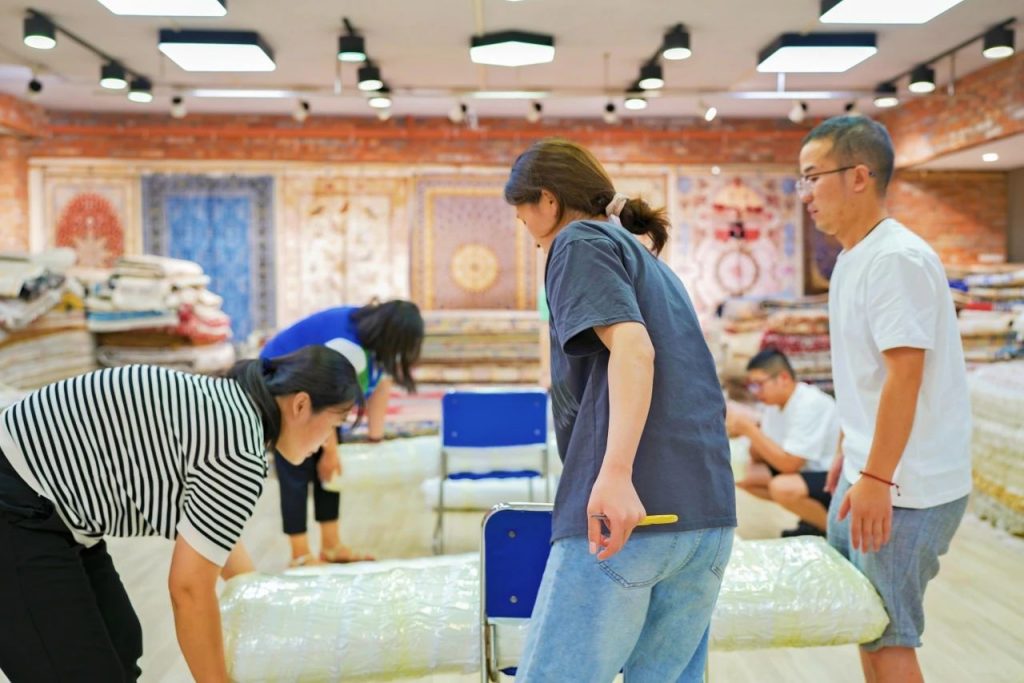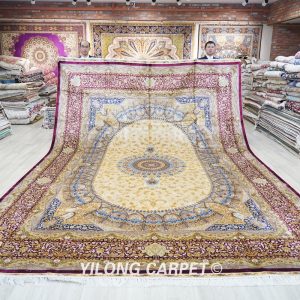Today, we are going to pack a batch of handmade silk carpets and send them to Germany.
There are more than 20 handmade silk carpets packed this time, with rich patterns: Persian style, Turkish style, dome design, tree of life design, etc.; the sizes range from 61cm x 91cm to 274cm x 366cm.
This customer is a Turk who opened a handmade carpet store in Germany.


Although most handmade carpets are produced in the East, their main audience is basically in Europe and the United States. In the middle of the last century, with the development trend of the pursuit of fashion, personalization, and naturalization in Western developed countries, and the practical functions of handmade carpets such as value preservation and beauty, they gradually became a popular commodity sought after by the upper class, and many cities that became famous for handmade carpet transactions were born, the first of which was the Port of Hamburg in Germany.
Before the 1990s, the Port of Hamburg in Germany was not only the world's largest handmade carpet trade center, but also the largest handmade carpet storage center at that time, with a storage capacity of about 5 million square meters, accounting for almost 40% of the world's handmade carpet trade volume at that time, with a value of US$800-1.1 billion, accounting for about 40-60% of the world's handmade carpet trade volume.
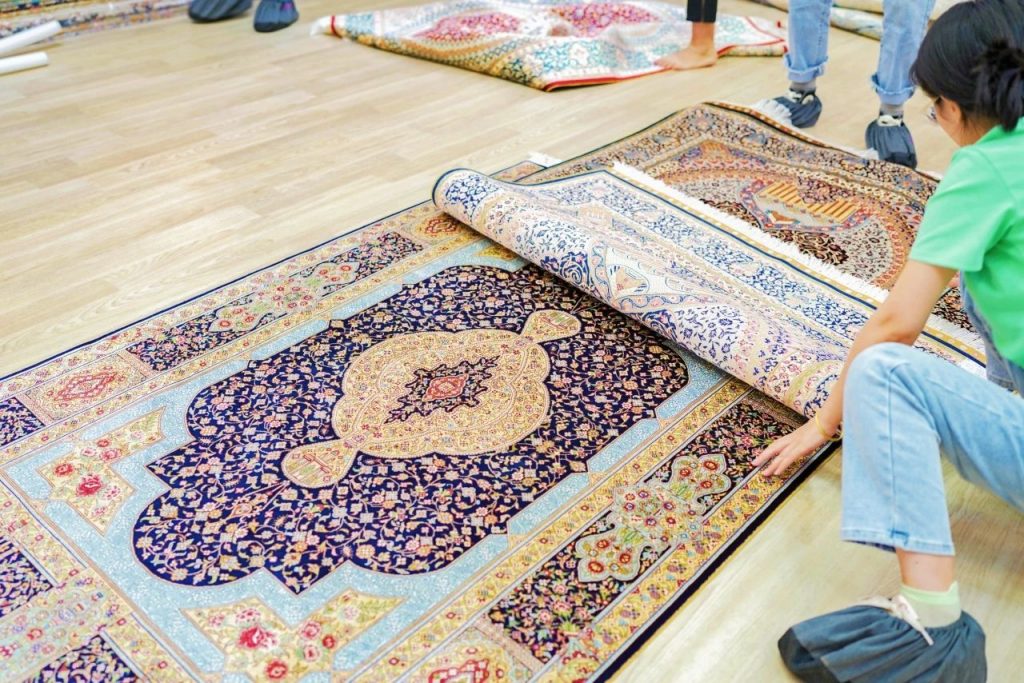
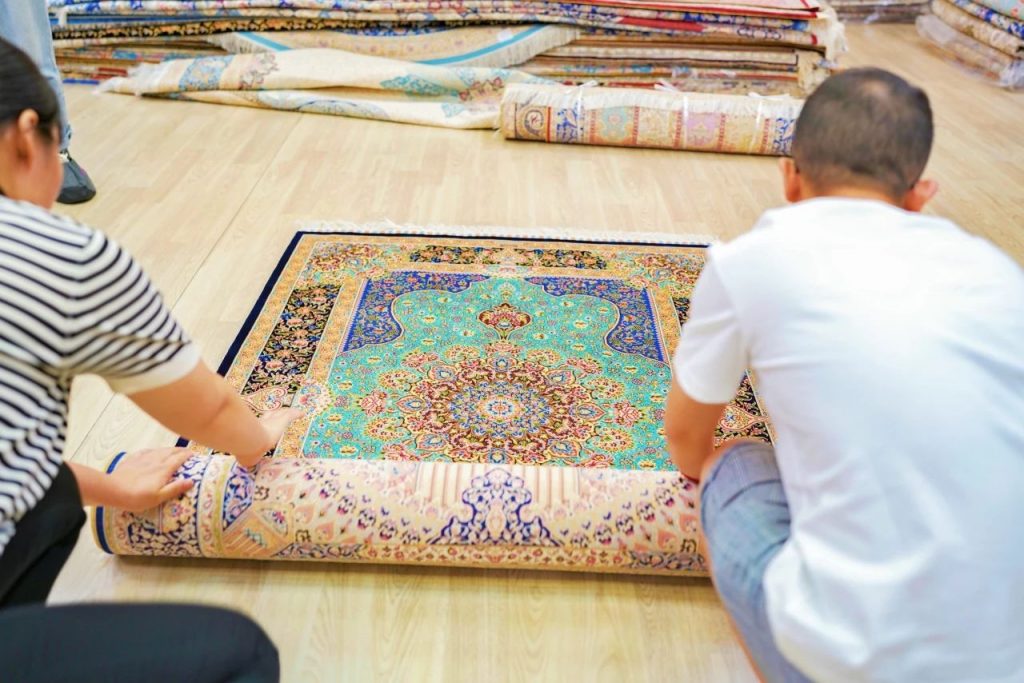
At that time, handmade carpets of different styles and materials from all over the world gathered and traded in Hamburg, Germany, and their popularity was comparable to that of Turkey today. However, after 1982, as the German economy continued to decline, its handmade carpet industry also began to sluggish, and the overall import volume fell by 30-40%. Hamburg's position as a distribution center for handmade carpets was also replaced by the rising star Turkey.
Although the scenery of the Port of Hamburg is no longer there, as a former major importer of handmade carpets, its huge consumer demand still exists. For example, this German customer who opened a handmade carpet store has been ordering handmade silk carpets from us for a long time, starting with dozens of carpets each time.
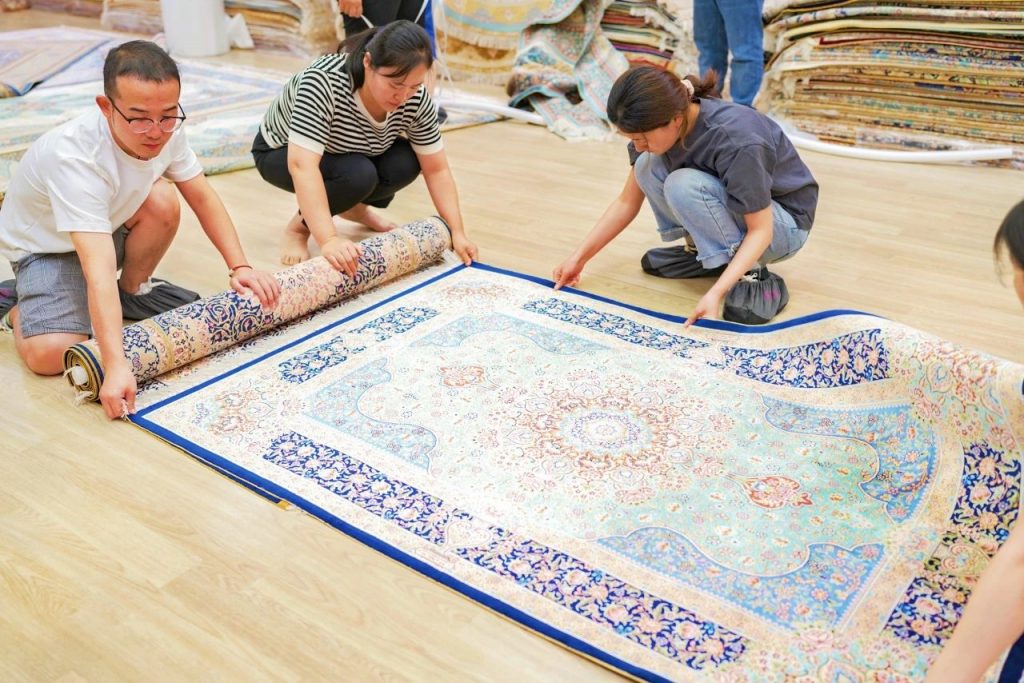
Although Tianjiang's customers come from all over the world, it is interesting that each customer has his own fixed aesthetic preferences when choosing carpets. If we were to describe the preferences of this German customer in four words, it would be "inclusive".
Every time he chooses a pattern style, he will not stick to a certain fixed type, but dares to try all kinds of patterns and designs. For example, this time, in addition to selecting some conventional traditional patterns, he also selected a lot of new designs that have just been launched.
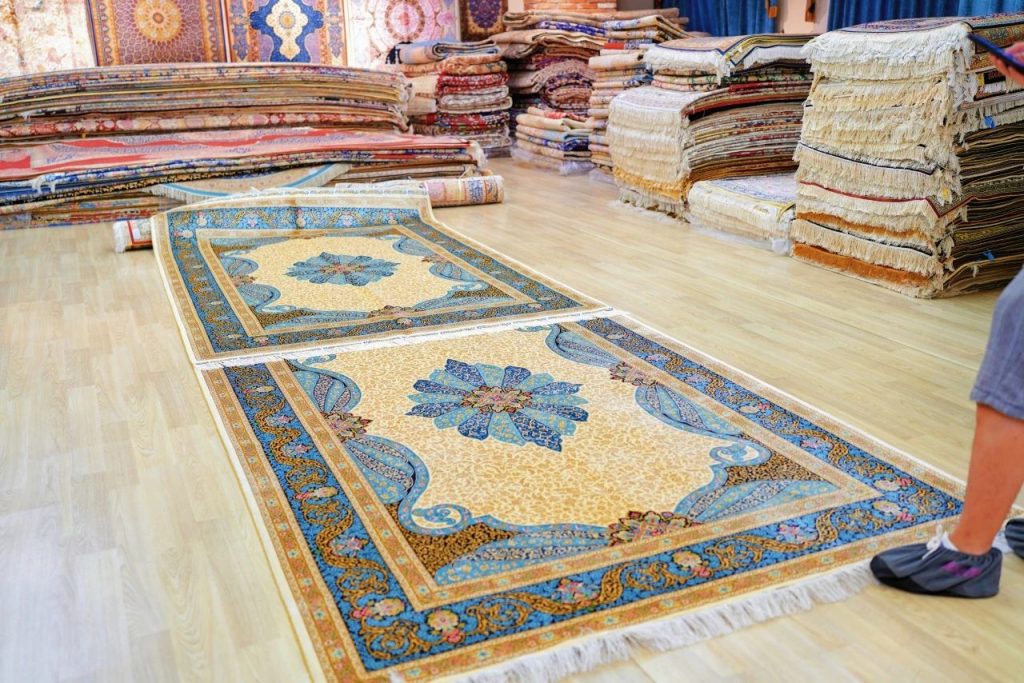

Like the two blue Turkish-style handmade silk carpets above, he originally wanted to order more of this pattern, but because this model is so popular, it was almost sold out as soon as it was put on the shelves. Now there are only two left in stock, so he chose all of them and repeatedly asked us to notify him as soon as the new one is woven.
Due to the high production cost, handmade silk carpets are more conservative than other industries in terms of innovation, but the advantage is that it ensures that every new design is taken seriously with an attitude of sharpening a sword for ten years. For example, the several new patterns we launched this year were basically booked by old customers as soon as they were put on the shelves, and the market feedback was very good.

